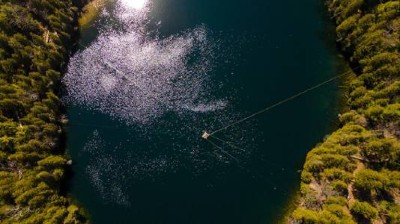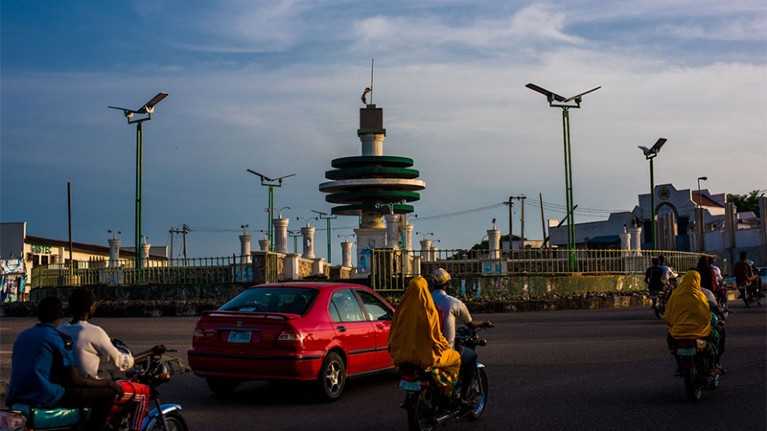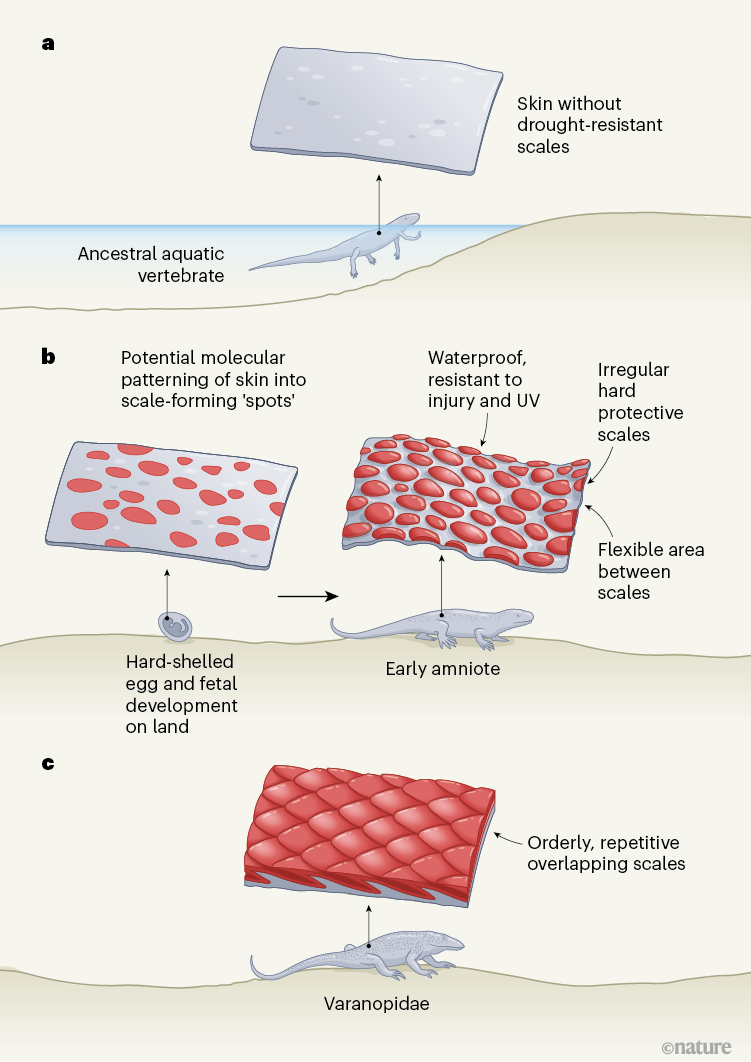[ad_1]
Sony is so closely associated with full-frame mirrorless cameras that it’s easy to forget it also sells the A6000 APS-C lineup — particularly since the last one, the A6600, came out five long years ago in 2019. The flagship A6700 finally arrived last year, though, with a feature list that appeared to be worth the wait.
It’s the same price the A6600 was at launch four years ago, but addresses its predecessor’s main flaws by boosting resolution a bit and reducing rolling shutter. At the same time, it’s been likened to a mini-FX30 cinema camera as it has the same sensor and video capabilities.
I’ve never been a big fan of Sony’s A6000 series. But now that the A6700 has been out a while, I was keen to see if it lived up to some of the hype and how it compared to rival Canon and Fujifilm models. As you’ll see, it’s mostly good news with just a little bit of bad.

Sony
The A6700 is Sony’s first APS-C mirrorless hybrid camera in years, but it was worth the wait. It heavily reduces rolling shutter that was a pain point on past models, while bumping image sharpness. It’s an excellent video camera as well, with 4K at up to 120 fps and 10-bit log capture. The main downside is burst speeds well behind the competition, particularly in electronic shutter mode
- Excellent video capabilities
- Accurate autofocus
- Improved handling
- Minimal rolling shutter
- Good image quality
- Slowish burst speeds
- Overheating
$1,398 at B&H
Body and handling
One of the things I’ve disliked about Sony’s APS-C bodies over the years is the usability and looks, especially compared to Fujifilm’s good-looking and easy-to-use models. I wouldn’t call the A6700 beautiful, but at least Sony has rectified the handling part.
The redesigned grip is larger and more comfortable, making it more comfortable to use over a full day. At the same time, Sony added a new control dial on the front, making the camera easier to use in manual or priority modes.
It includes a new dedicated photo, video and S&Q dial, letting you keep settings separate for each. Menus are a big step up too, as the A6700 uses the improved system from recent full-frame models. The only thing missing is a joystick, but the focus point can be adjusted using the d-pad-like dial on the back.
The A6700 is also the first Sony APS-C camera with an articulating display, so it’s better for vloggers than the flip-up display on past models. The relatively low resolution EVF is a weak point as it’s difficult at times to check focus, but it does the job most of the time. .
Another negative is the single card slot, but at least it supports high-speed UHS-II cards. Luckily, it has the same large battery as full-frame models, which gives it an excellent 570 shot CIPA rating.
Other features include microphone and headphone ports (along with support for Sony’s hot shoe audio accessories), a USB-C port for charging and data transfers and an HDMI port. The latter, unfortunately, is of the fiddly and fragile micro variety.
All of that adds up to a 6000-series camera I’d happily use for most types of work. Previously, I found those models not up to the job, especially for video.
Performance
Performance is more of a mixed bag, though. Lossless RAW bursts are possible at up to 11 fps, either in mechanical or electronic shutter modes. That compares to the 15 and 30fps for the similarly priced Canon EOS R7 and 15/20 fps for the Fujifilm X-T5. That’s quite a deficit considering the latter two have much higher resolution sensors.
The A6700 only stores up to 36 compressed RAW frames before the buffer fills, compared to 45 on the A6600 and comparable to rivals. Based strictly on speed, though, the R7 and X-T5 are better action cameras.
Fortunately, the autofocus is superb and that’s arguably more important for a consumer camera. In continuous mode, you’ll get reliable results even with fast moving subjects. And the AI tracking locks onto eyes and faces, ensuring you won’t miss important shots of rowdy kids, soccer games and more.
It also works with airplanes, animals, birds, cars or trains and insects. Unlike Canon’s auto system, though, you have to tell the A6700 exactly what you’re tracking. Once you’ve set it up the way you want, though, it’s a touch more reliable than Canon’s system, and significantly better than the X-T5..
The five-axis in-body stabilization is good but not great, offering 5 stops compared to 8 on the EOS R7 and 7 on the Fuji X-T5. Still, I was able to take sharp photos down to about an eighth of a second.
Rolling shutter was my main complaint with the A6600, but it’s now much improved and about as good as you get without a stacked sensor. It’s still present, though, so you’ll want to use the mechanical shutter for fast-moving subjects like propellers and trains.
Image Quality
1 / 32
With a new 26-megapixel sensor, The A6700 captures more detail than past 24-megapixel models. As mentioned, though, it’s lacking compared to the 32.5-megapixel Canon R7 and 40-megapixel X-T5.
Colors are mostly spot-on, but I still prefer Canon’s skin tones. JPEGs look good out of the camera, if a touch over-sharpened. With 14-bit RAW uncompressed files, I found plenty of room to adjust and tweak images, dialing down bright areas or adding detail to shadows. Keep in mind that when shooting bursts, though, RAW files are captured with only 12-bits of color fidelity.
There is a benefit to the lower resolution. The A6700 is better in low light than rivals, with noise well controlled up to ISO 6400. Images are usable up to ISO 12800, but anything beyond up to the ISO 102,400 limit is for emergency use only. It’s best to emphasize shadow exposure at high ISOs, as lifting those even a couple of stops creates excessive noise.
Video
The A6700 is so far above its predecessor for video that it’s useless to compare them. Rather, think of it as a cheaper, smaller FX30 cinema camera with the same image quality. The main difference is that the A6700 doesn’t have the same cooling capability, as I’ll discuss shortly.
It subsamples the full sensor width for 4K at 30 and 60 fps, so video is sharper than the X-T5 or R7. And the A6700 beats both of those models by having a 4K 120fps mode, though it’s cropped significantly at 1.58x.
Due to the relatively small body and lack of fans, you’ll need to be wary of overheating at 120p, as it’ll cut out after 20-30 minutes. For indoor shooting, you can generally shoot at up to 4K 60p without any stoppages with the “auto power temp” setting on “high.” Outside on a hot day, however, you may hit the limits and need to wait for the camera to cool down.
Like the FX30, you can shoot all video modes with 10-bit with S-Log3 capture. You can also load your own LUTs either to make log footage easier to monitor, or bake it into the final image.
Rolling shutter is still present, so you’ll still need to be careful with whip pans, fast subjects and the like. However, it’s far less bothersome than on past Sony crop sensor models.
It has a video feature that’s actually lacking on the FX3, namely auto-framing. That’s handy for vloggers as it can crop in and follow them as they move around the frame — with less quality loss than the ZV-E1 (this feature is finicky on the A6700 so be sure to test it first). It also offers focus compensation that digitally eliminates breathing, and again, this extra resolution compared to the ZV-E1 results in a sharper result.
Stabilization for video isn’t quite as good as the ZV-E1, though. The active mode is fine for handheld use and slow pans, but doesn’t do a lot to smooth out footsteps, and adds a 1.13x crop.
As for video quality, you’re seeing the same accurate colors and solid low-light capability as with photos. The 10-bit log options allow for plenty of flexibility in post, especially with contrasty images.
Wrap-up
The A6700 is easily Sony’s best APS-C camera yet, excelling at both photos and video, and offering much better handling. Despite being far more capable than the A6600, it carries the same $1,400 price.
As a photo camera, it’s slower than its main competition, the Canon R7 and Fujifilm X-T5, so those models are better for shooting action. Sony’s autofocus is slightly better though, and faster bursts are worthless if photos aren’t sharp.
As a video camera, though, it beats its main rivals across the board. All told, it’s a great option for content creators or hybrid shooters who favor video but do some photography. If that’s you, I’d highly recommend it.
[ad_2]
Source Article Link





















